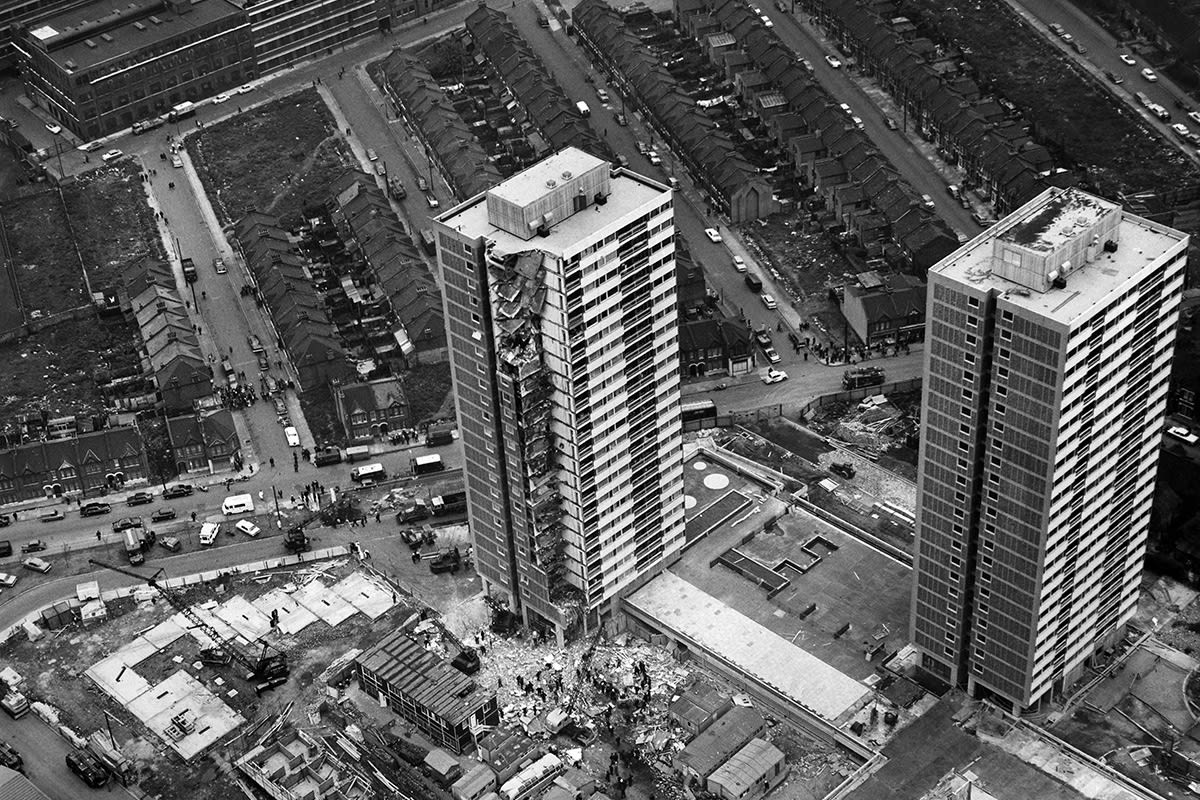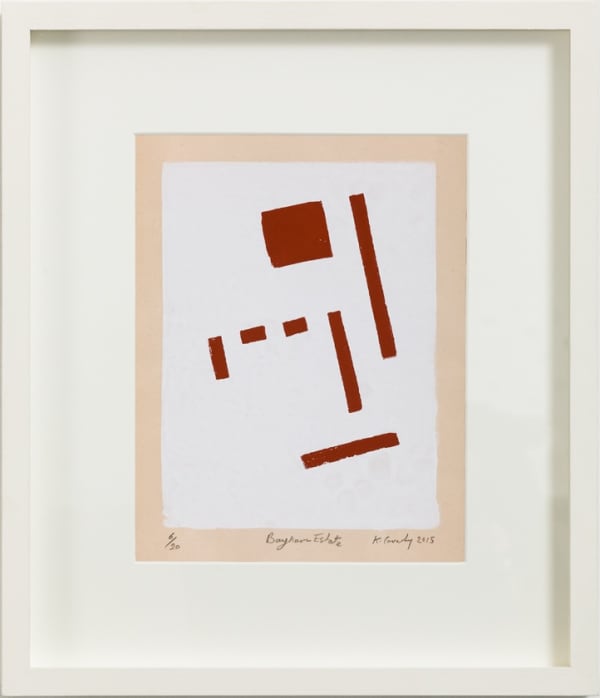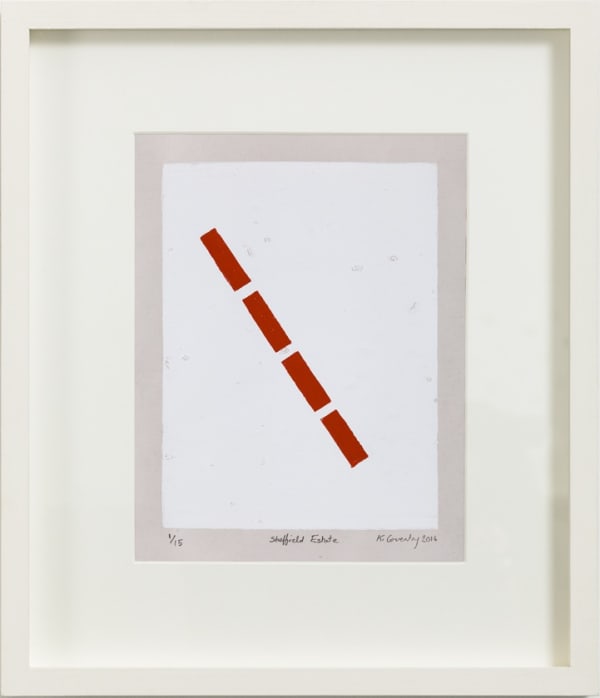Keith Coventry’s association with the YBA movement of the 1990s is more to do with generation rather than approach to practice. His significance to that generation, and more broadly to the history of contemporary British art in the twentieth and twenty-first centuries is here presented through the medium of printmaking. His engagement with the traditional mediums of sculpture, and more particularly painting, ideally translates into the medium of screenprinting and etching. From the beginning of his exhibition history he has woven a complex set of connections between the expression of a modernist aesthetic in architecture, its inevitable failure to deliver its promised utopian vision and the concomitant manifestation of that modernism in painting and sculpture of the 1920s to 1960s.
Kasimir Malevich’s Suprematism is sublimated into Coventry’s series of ‘Estate etchings’. But whereas Malevich stated that he was ‘trying desperately to liberate art from the ballast of the representational world’ Coventry’s finely worked etchings are full of representational content. They are directly derived from the schematic maps of public housing estates and as all other content is removed, our initial response to the work is on a purely aesthetic level. However, the titles serve to unpack the latent content of the work. In the ‘Ontological etchings’ Coventry has extracted all the information from the same maps except for the directional arrows, ‘you are here’. The implicit play on words implies its opposite, ‘you are nowhere’, pointing to the sense of rootlessness of many of the inhabitants of these essentially failed public housing projects.
Keith Coventry’s ability to conflate both the history of recent art and the realities of British society as expressed in both the architecture and the more banal aspects of the urban environment places him at the very centre of recent developments in contemporary art. His re-appraisal of the relationship of art history to the contemporary urban environment has produced a unique body of work which constitutes a true ‘history painting’ of the twentieth and twenty-first centuries.
© Richard Dyer
-
Keith Coventry Estates, made from 1992 onwards, confront the Utopianism of Modernism with its mismanaged results: Britain’s crumbling inner-city estates and an all but invisible society that inhabits that landscape.
Andrew Wilson History Paintings, from Keith Coventry: Paintings (exhibition catalogue). Glasgow: (Tramway), 2006
-
The collapse of Ronan Point 16 May 1968
-
-
Linocuts 2015
-
Linocuts 2016










